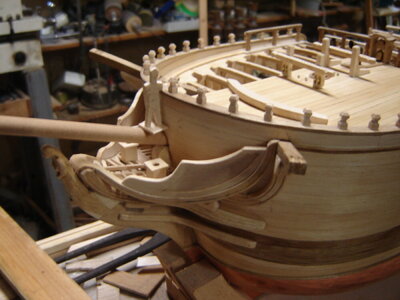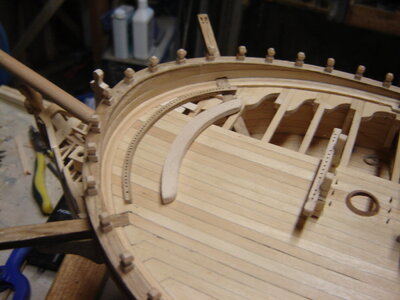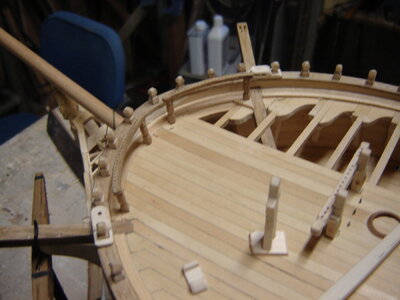1. Lines from the spritsail mast and sail(s) could be belayed almost anywhere that was logical and sensible.
That would include bollards, ring bolts in the foc'sle deck, pins in a rail attached to, or a part of, the main rail, shroud cleats, ring bolts in the spritsail yard, etc, etc,etc. During the 17th and most of the 28th century there was no fleetwide standard.
2. The one way that I have never seen is to attach a pin rail flush onto a deck, such as the foc'sle as you have shown, and to push the pins through the rail and the deck ending with the tip of the pin in the hold. The reason is the following - in order to secure a line to a pin, you have to have access to the bottom of the pin. The line wraps around the top of the pin, is pulled down to the bottom of the pin, wrapped around the bottom of the pin, is then pulled up to the top of the pin where the process of wrapping up and down is repeated several times. This whole process is finalized in one of several ways again involving access to the top and bottom of the pin. You can not get to the tip (or bottom )of the pin if it is the hold - that is a bigtime problem!
3. You probably need to remove the pinrail that is mounted flush with the foc'sle deck; my guess is no ship ever built had this detail.. You can replace this flush mounted pnrail with a series of eyebolts with (or without) rings. You can think of eyebolts as a sort of universal standard detail since almost every ship (warship and/or commercial ship) built had eyebolts with or without rings installed somewhere (or everywhere); even to this day. If your plans show such a detail, they are simply in error.








